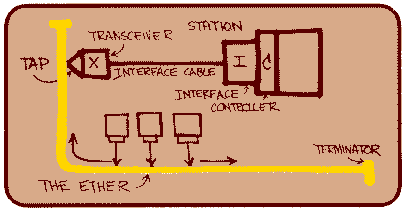Robert Metcalfe – Inventor of Ethernet
Who invented Ethernet? Robert Metcalfe got the idea for the Ethernet protocol when he read a 1970 computer conference paper by Norman Abramson of the University of Hawaii about the packet radio system called ALOHAnet linking the Hawaiian Islands:
Each node in ALOHAnet sent out its messages in streams of separate packets of information. If it didn’t get an acknowledgment back for some packets because two radios were broadcasting at the same time, then the missing packets were considered “lost in the ether”.
When a packet was lost in the ether, the node would rebroadcast them after waiting a random interval of time. Because of this randomness, problems with collisions were quickly resolved except under the highest traffic loads. On average, the network rarely had to retry more than once or twice to get all of the packet to the destination, which was more efficient than trying to implement a complex coordination system to prevent collisions in the first place.
Abramson’s design showed that, while it worked well, ALOHAnet reached its maximum traffic load at only 17% of its potential maximum efficiency, because of a great increase in collisions at higher loads. Metcalfe chose this problem for his computer science thesis, and, as a graduate student at Harvard, showed that you could use mathematical queuing theory to achieve 90% efficiency of the potential traffic capacity without being locked up by the packet collisions.

Robert Metcalfe's sketch, made to present Ethernet to the National Computer Conference in June 1976.
Ethernet is now by far the most common local area network. Metcalfe went on to found 3Com in 1981, a maker of Ethernet network cards and other communications products, and now one of the largest telecommunications companies in the world.
The first version of the Ethernet standard had a bandwidth of 2.94 Mbps, or about 300,000 characters a second. The current version is standardized as IEEE 802.3, and provides a bandwidth of 10 Mbps or about 1,000,000 characters a second, over normal twisted pair telephone wires, and is the most commonly deployed local area networking standard. Recent advances in the technology have resulted in development of 100 Mbps and 1 Gbps Ethernet standards, which are increasingly being deployed for high bandwidth environments.
